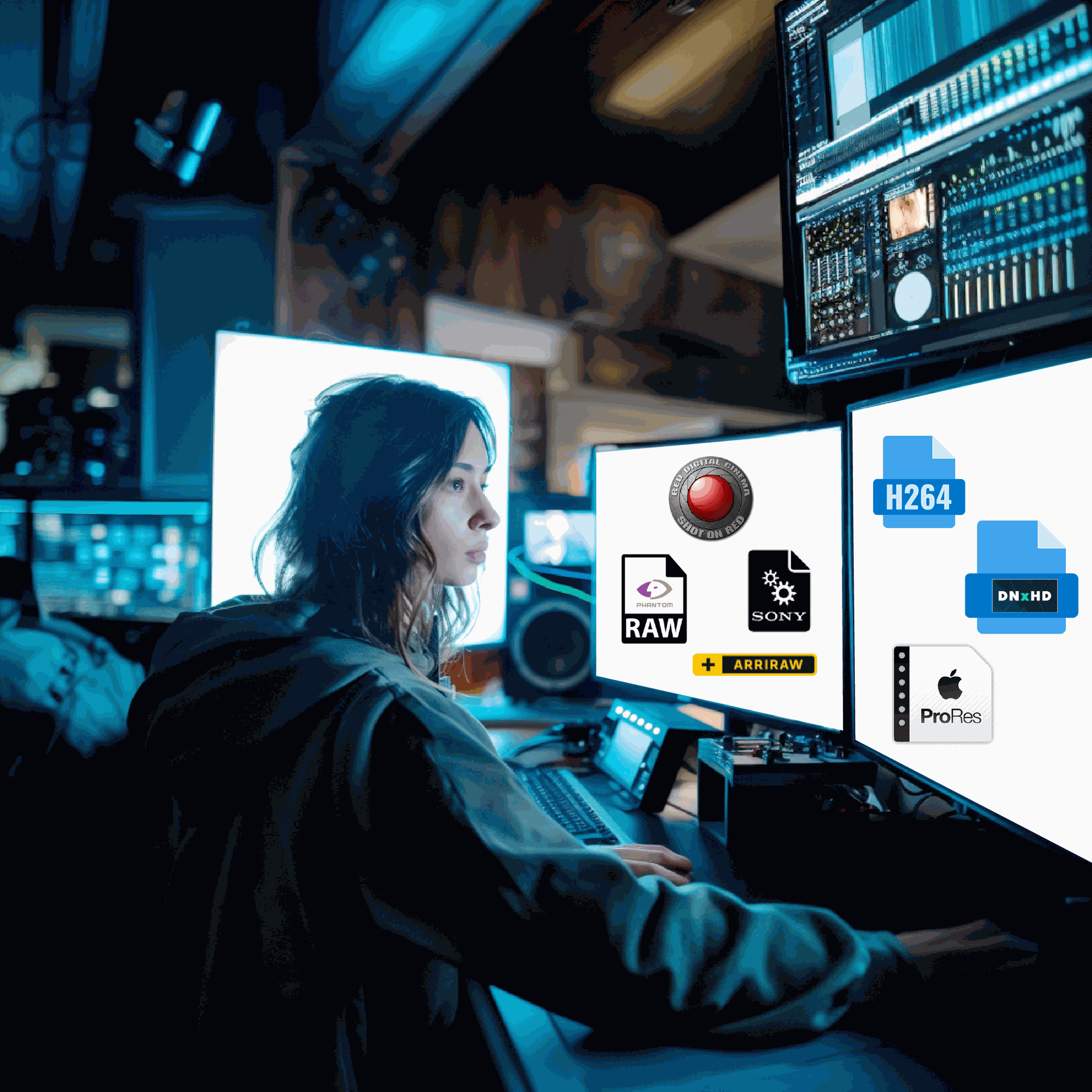
In this article, we'll discuss the video file transcoding process and how it's increasingly important for proper display on any device. Whether it's small projects or large productions, it's essential for end users to have an optimal visual experience for the project's success. At Colorshape, we can handle projects with large data management, providing precise and punctual support to ensure your project's success. But let's start by explaining the basics even to those who are new to this world.
1. What is Transcoding
In simple terms, transcoding is a process applied to transform a file into another format. Video files can be large and require greater graphic and computational power to read. Transcoding allows reducing the size of these video files without significantly degrading the quality, making the file more "digestible" and lightweight for working with, transferring, etc.
1.1 Codecs
To handle the vast amount of data in video files, broadcasters resort to a technology known as "codecs" for their compression. The most commonly used video codecs in the professional cinematographic world are Prores, Dnxhd, and h264. In general, all codecs remove unnecessary information from the video stream to reduce file size while trying to preserve the best possible video quality. From a technical standpoint, video transcoding involves taking an existing video file and re-encoding it with a different codec or modified settings. When recording, the resulting file is referred to as OCF (Original Camera Footage), which is the highest quality recording available. Subsequent versions tend to have lower quality, meaning video transcoding generates a copy with reduced resolution and/or bitrate.
2. The Importance of Transcoding for an Optimal Visual Experience
Your videos must be transcoded correctly to be accessible to a wide range of users. Transcoding takes into account user differences to provide a consistent visual experience across the board. If your videos are transcoded correctly, you can be sure that your content will be playable in many contexts. In summary, video transcoding is a key element to ensure that video content is accessible, usable, and of high quality for all users, regardless of their device or internet connection speed. The goal is to provide all viewers with the best possible experience.
2.1 Buffering Reduction
Buffering is a technical process that occurs during the playback of digital multimedia content and involves preloading and storing a portion of a multimedia file in the buffer or temporary memory of a device. This data preloading phase should ensure smooth and uninterrupted content delivery. However, buffering can cause issues such as pausing video playback to load the next set of data. Through transcoding, this problem can be reduced. The end result, ideally, is a reduction in buffering and latency to lighten and speed up workflow segments following production and shooting phases.
3. Colorshape Transcoding Service
When working on film productions, it's necessary to follow precise steps to work as efficiently as possible. A smooth workflow reduces production time and cost. Transcoding is essential for film distribution because different streaming services require specific video formats. Here at Colorshape, among the various services we offer, we also provide Transcoding Service for video files in various formats. We have various machines for handling any type of format. First, we perform meticulous color correction on the "source" files. For cloud backup, we use a 10 Gb/s line, reaching 2 Gb/s in Upload, allowing almost real-time sharing of transcodings. But most importantly, we can share native footage while saving time and money: just one terabyte per hour. Contact us at info@colorshape.it for personalized advice, or check out our website for a complete list of our services.
TRANSCODING